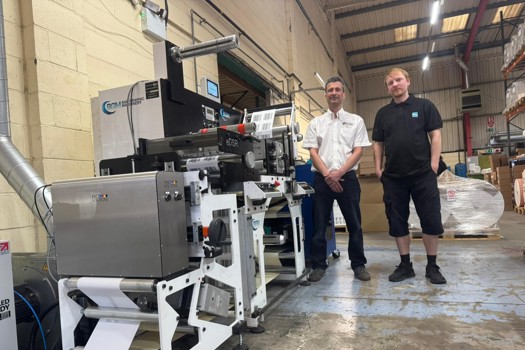And every product featured involves print and packaging in some form or another, making the prevailing trend towards sustainable packaging a huge opportunity for print and packaging firms of all shapes and sizes – although one that’s not without its own challenges.
A glimpse into how complicated it can be to change any of the established packaging processes came in the recent news from Unilever, which shared something of a breakthrough regarding its iconic Pot Noodle brand – a product that claims top spot in the ‘instant hot snack’ category here in the UK.
While Unilever didn’t reveal how many Pot Noodles are made at its factory in Wales every year, it seems safe to say the answer will be many millions. And all of them in plastic pots, until now.
The €60.1bn-turnover (£52bn) giant is trialling 500,000 new paper-based Pot Noodle pots (try saying that quickly) with supermarket Tesco, in a move that has required more than three years’ of development – three years! – a timeline that really puts some of the ‘why don’t they just change the packaging?’ discussions into perspective.
Unilever, and other big brand owners, are rightly under huge pressure to do everything possible to improve their sustainability creds. These corporate behemoths are now held to account about their public profile about their sustainability plans by shareholders and of course by consumers, who will quickly instigate social media pile-ons and boycotts of brands they perceive to be behaving badly.
Unilever’s plans, through its Compass for Sustainability project, include achieving net zero emissions across its value chain by 2039. Perhaps surprisingly, its goal for a “deforestation free” supply chain for a number of products that included paper, was this year. Unilever aims to collect and process more plastic than the group sells worldwide by 2025.
Circular economy
At fellow consumer brand giant Procter & Gamble, which has global sales of $80.2bn (£63.1bn), the corporate goal is that 100% of its consumer packaging will be designed to be recyclable or reusable by “no later than 2030”.
P&G’s objective is “to help enable a circular economy through reuse and recycling of packaging”. As such, it does not include compostable or biodegradable packaging in its goals.
P&G also rightly points out that: “Driving greater circularity in plastic packaging is fundamentally a system challenge that will require collaboration across industry, governments, civil society, and academics.”
Here in the UK that challenge is obvious from the lack of cohesive country-wide recycling collection standards, and the fact that plans for deposit return schemes (DRS) in England and Scotland for certain types of packaging and containers have once again been delayed, with the can quite literally kicked down the road and probably into a landfill.
In England, plans for a DRS were announced by then-environment secretary Michael Gove in 2018 and were a Conservative manifesto promise in 2019. The likely implementation date is now autumn 2025. In June, the Scottish government accused its UK counterpart of making “eleventh-hour changes” that would stymie Scotland’s plans to introduce a DRS in March 2024.
In the face of political prevarication, brand owners and retailers have to take matters into their own hands.
Plan A delivers for M&S
Marks & Spencer famously set out its ‘Plan A’ (because there is no Plan B) ambitions back in 2007. The plan has since been focused on making sure the retailer can become a net zero organisation across all of its own operations, and its entire value chain, by 2039/40 – a decade ahead of the government’s current plans to decarbonise the UK economy by 2050.
The actions already taken by M&S indicate a direction of travel that is impactful for its print and packaging supply chains, and for the wider industry as it sets sustainability trends that others are likely to follow.
As M&S notes: “As an own-brand retailer, we are uniquely positioned to work with our trusted suppliers to reduce Scope 3 emissions. One of our biggest strengths is the close and long-lasting relationships we’ve built with our partners, from farms to factories.”
The retailer has now rolled out its own plastic packaging takeback scheme to more than 500 stores, meaning that customers “can now easily recycle more of our plastic packaging, including ‘soft’ plastics that aren’t typically collected for recycling by UK local authorities, such as bags, films, pouches and wraps”.
It is also removing hard-to-recycle plastic sleeves from a growing range of products. Last year some 50 tonnes of plastic packaging was replaced by FSC accredited paper packaging for teacakes.
New cardboard packaging for vine tomatoes will remove “an estimated 6.3m pieces of plastic”.
Just a handful of examples like this make the vast range of opportunities in sustainable packaging clear, but what’s also clear is that printers and converters need to meet the rigour of their clients’ environmental goals – how does print’s own ‘inside the factory’ measure up?
As net zero consultancy CarbonQuota rightly points out, this industry opportunity also comes with responsibilities: “Printing companies that follow a science-based carbon reduction programme will stay ahead of the competition,” it states.
“They will be in a much better position to create the right relationships around moving towards zero carbon with their clients. Together, they will be able to start achieving what both consumers and forthcoming legislation demand.”










